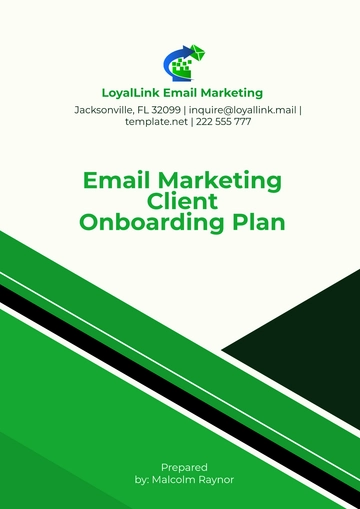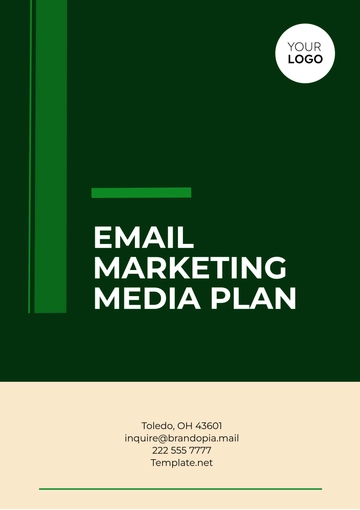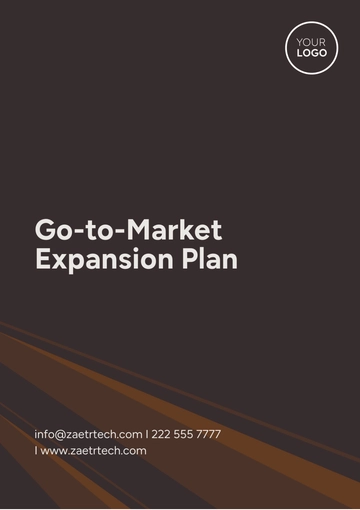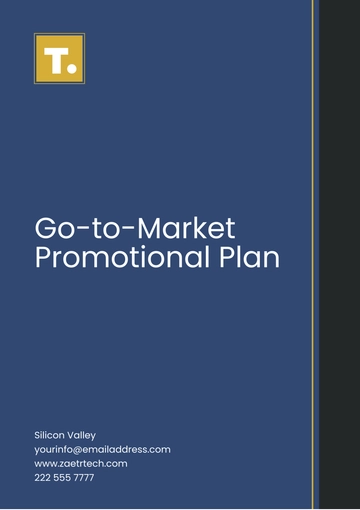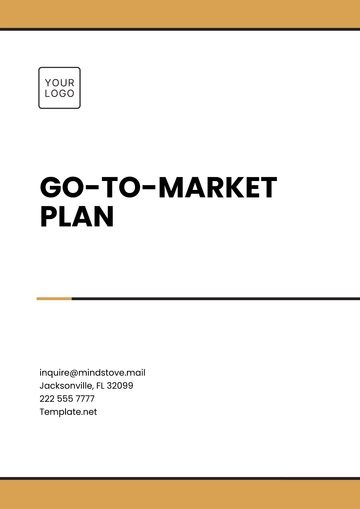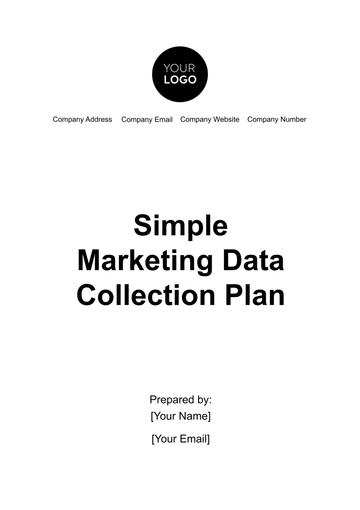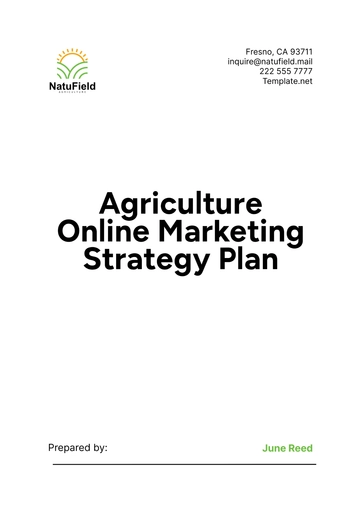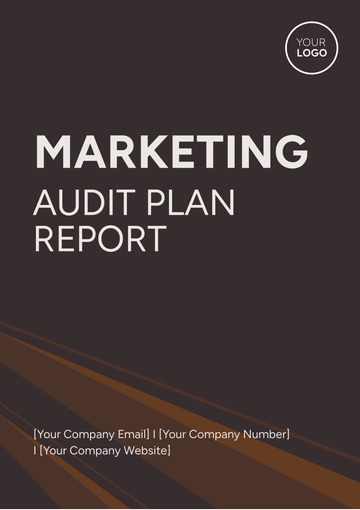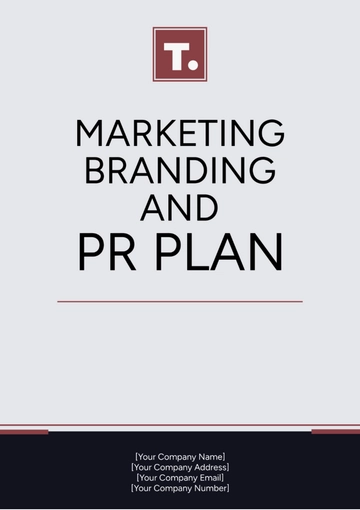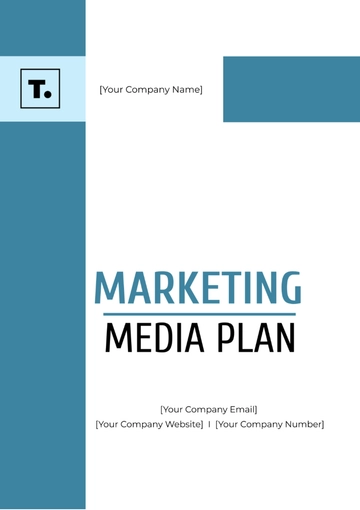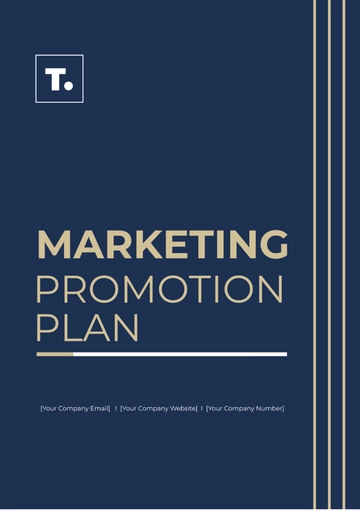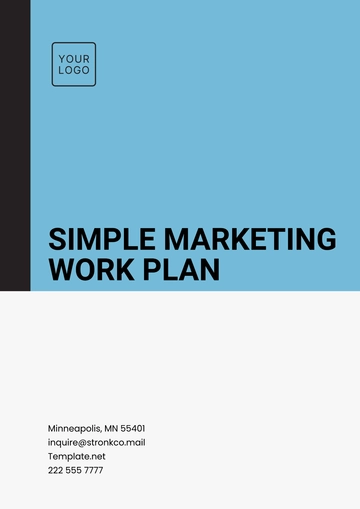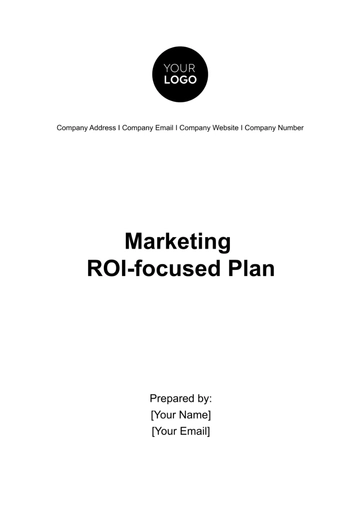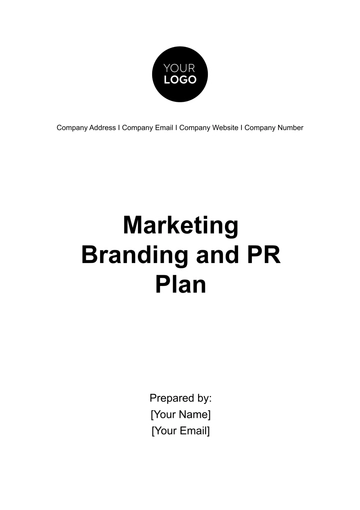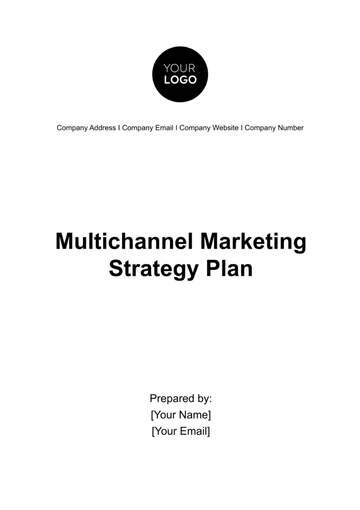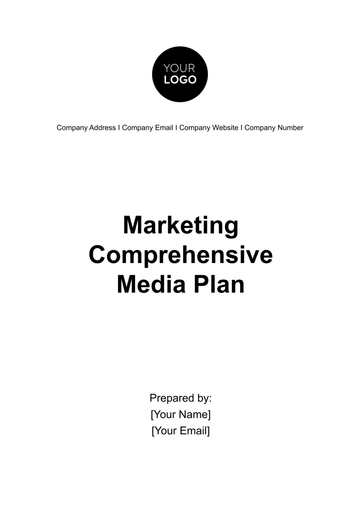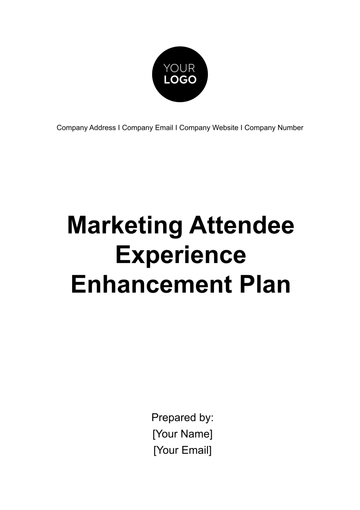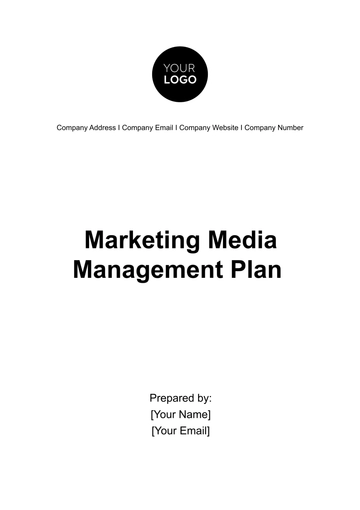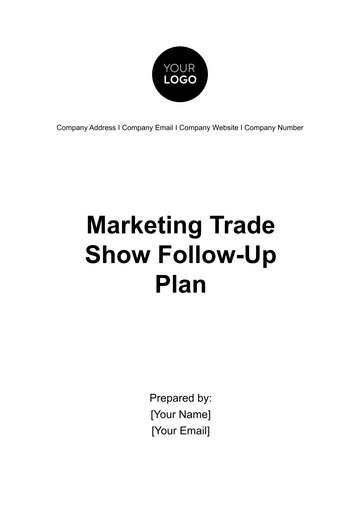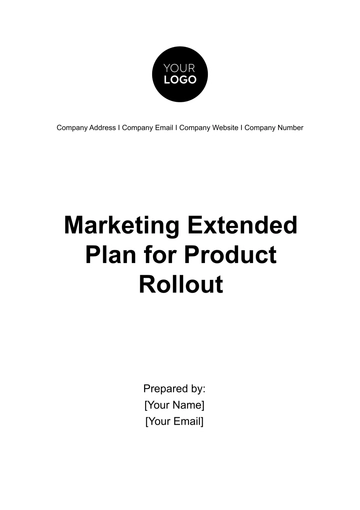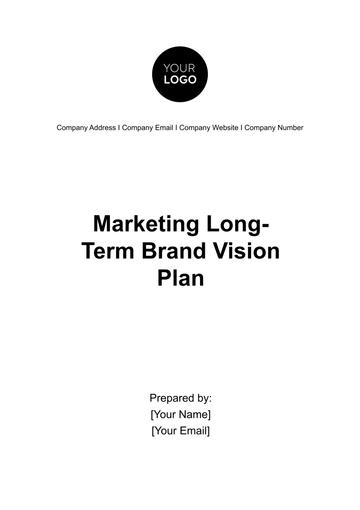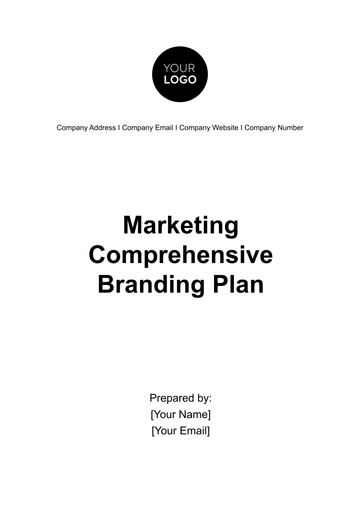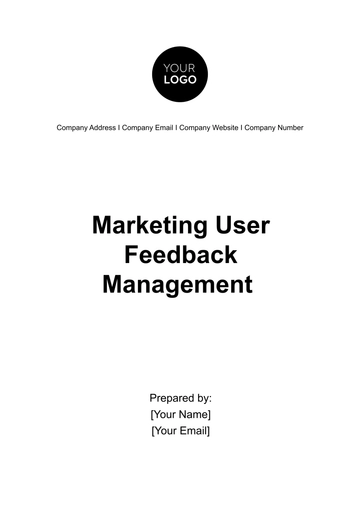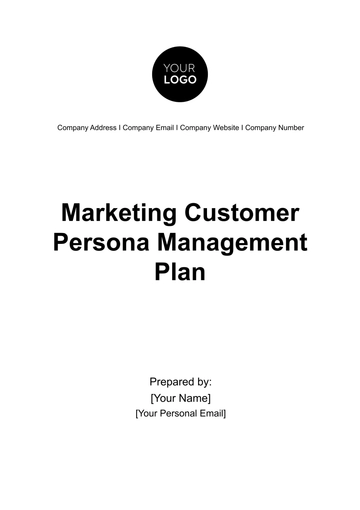Free Go-to-Market Promotional Plan

I. Executive Summary
The Go-to-Market (GTM) Promotional Plan for [Your Company Name] provides a detailed strategy for the successful launch of our newest innovation, [Product Name], into the evolving and competitive marketplace of 2050. The product is designed to meet the needs of today’s eco-conscious and tech-savvy consumer. The GTM strategy focuses on a blend of cutting-edge digital marketing, strategic partnerships, and high-impact promotional campaigns aimed at building brand awareness, driving customer acquisition, and increasing revenue.
Our primary objective is to generate $[50 million] in revenue within the first [12 months] of launch, with a gross profit margin target of [60%]. To achieve this, we will leverage AI-driven marketing tools, AR (Augmented Reality) and VR (Virtual Reality) technologies, and a multi-channel promotional approach. Additionally, the plan emphasizes sustainability, a core value in 2050, and addresses the growing consumer demand for environmentally responsible products. This holistic strategy will position [Your Company Name] as a leader in both technological innovation and sustainability, creating long-term value for customers and stakeholders.
Key Objectives:
Revenue target: $[50 million] within the first [12 months].
Gross profit margin: [60%] by the end of Year 1.
Customer acquisition cost: Reduce to $[100] by the end of Year 1.
Break-even point: Achieve within [9 months] of the product launch.
Repeat revenue from existing customers: Secure $[5 million] within Year 1.
II. Market Analysis
A. Industry Trends in 2050
Technological Integration
In 2050, the convergence of Artificial Intelligence (AI), Virtual Reality (VR), and Blockchain technology has transformed consumer interactions. Companies that embrace these technologies in their promotional strategies stand to gain a competitive edge. For instance, VR allows customers to interact with products in immersive environments, which has been shown to increase conversion rates by [35%]. Similarly, AI-driven customer support is now standard practice, offering 24/7 personalized assistance, reducing operational costs by as much as $[500,000] annually. This high level of technological integration not only enhances customer experiences but also fosters greater loyalty and trust in the brand.Sustainability and Green Technology
Eco-conscious consumers dominate the market in 2050, with [75%] of customers choosing brands that demonstrate a commitment to sustainability. This shift requires companies like [Your Company Name] to highlight their green initiatives, such as carbon-neutral production and recyclable packaging. Research shows that companies practicing sustainability see an increase in customer loyalty of [20%]. Therefore, incorporating environmentally responsible messaging in our promotional plan is crucial for attracting the modern consumer who is increasingly prioritizing sustainability in their purchasing decisions.Omni-Channel Engagement
Customers today expect a seamless experience across both digital and physical touchpoints. As [85%] of shopping interactions occur through a combination of channels—be it AR storefronts, online platforms, or physical stores—the importance of omni-channel marketing cannot be overstated. Our promotional plan will ensure that customers receive consistent brand experiences across social media, VR demos, and in-person retail environments, fostering stronger customer relationships and ensuring higher conversion rates. This strategy will enhance our brand's visibility and allow us to effectively engage consumers at every stage of their buying journey.Data Privacy & Security
In 2050, concerns about data privacy have reached unprecedented levels, with [92%] of consumers citing this as a key factor when choosing a brand. New regulations around biometric data and AI-driven algorithms have led to stricter compliance requirements. Our promotional strategy will include clear messaging about our commitment to data security, helping to build trust with potential customers and differentiate [Your Company Name] from competitors. This emphasis on privacy and security will be crucial for attracting customers who are wary of how their personal information is used and stored.
B. Target Market
Demographics
The primary target demographic for [Product Name] includes tech-savvy individuals aged [25–45]. This audience is affluent, with annual incomes between $[100,000] and $[200,000], and they are highly engaged in technology-driven and sustainability-focused products. Geographically, we will focus on metropolitan regions in North America and Europe, where consumer preferences align with our product’s unique features. This demographic has demonstrated a willingness to invest in products that enhance their lifestyles while being mindful of their environmental footprint.Psychographics
Our audience is primarily driven by a desire for innovation, efficiency, and sustainability. They are early adopters of technology, interested in both cutting-edge innovations and brands that contribute positively to the environment. Research shows that [65%] of this group prefers to engage with brands that offer digital experiences, such as AR-enabled product trials and virtual reality shopping environments. Furthermore, they value authenticity in brand messaging, especially when it comes to sustainability claims. This deep understanding of their values will inform our marketing strategies, enabling us to connect with them on a personal level.Geographical Segmentation
We will initially launch in North America, targeting key cities like New York, San Francisco, and Toronto, which are hubs for tech innovation and sustainability. We will also expand to Europe, particularly in cities like London, Berlin, and Stockholm, where environmental consciousness and tech adoption are high. This multi-region approach ensures maximum product exposure to early adopters. By aligning our launch strategy with these regions, we can take advantage of local tech ecosystems and consumer trends.
C. Competitive Landscape
The competitive landscape in 2050 is shaped by AI-driven tech companies and sustainability-focused brands. Our primary competitors include:
Company A: Known for its pioneering use of blockchain technology in product traceability, this company is heavily focused on ethical sourcing and sustainability. Their revenue in the last year was $[75 million], primarily driven by consumers who value transparency. Their strong branding around sustainability gives them a competitive edge in the market.
Company B: A leader in AR-based shopping experiences, Company B has seen a [30%] increase in sales due to their virtual stores. Their focus is on delivering immersive shopping experiences using AI-powered virtual assistants. This successful integration of technology into their shopping model has made them a formidable competitor.
Company C: Specializing in AI-driven consumer electronics, Company C’s products are known for their superior smart home integrations. With a revenue of $[100 million], they pose a strong competitive threat, particularly in the tech-savvy demographic. Their advanced product features and marketing strategies have solidified their position in the market.
[Your Company Name] differentiates itself by combining these two key trends—AI-driven innovation and sustainability—into a single product offering that not only meets the needs of modern consumers but also aligns with global values. By highlighting our unique selling propositions, we can carve out a niche that resonates with our target audience.
III. Objectives
A. Financial Objectives
Achieve $[50 million] in revenue within the first [12 months] of product launch. This revenue goal is ambitious but attainable, given the size of our target market and the efficacy of our marketing strategies.
Reach a gross profit margin of [60%] by the end of Year 1, allowing us to reinvest in future product developments and marketing initiatives.
Reduce customer acquisition cost (CAC) to $[100] by the end of Year 1. This reduction will be achieved through optimized marketing campaigns and leveraging organic growth strategies.
Achieve a break-even point on marketing investment within [9 months] of the product launch, ensuring that our promotional activities are financially sustainable.
Secure $[5 million] in repeat revenue from existing customers within Year 1 through effective customer retention strategies and loyalty programs.
B. Marketing Objectives
Generate [10 million] social media impressions within the first [3 months] of the campaign launch, establishing a strong online presence and driving brand awareness.
Increase brand awareness by [25%] by the end of the first quarter through targeted digital and traditional media campaigns, creating a recognizable brand identity in the market.
Acquire [50,000] new customers in the first year through a combination of digital marketing, influencer partnerships, and promotions, expanding our customer base and reach.
Reach a digital engagement rate of [20%] across all platforms within the first [6 months] of the promotional campaign, ensuring that our content resonates with our audience.
Attain a customer conversion rate of [15%] from all digital marketing efforts, translating online engagement into tangible sales.
C. Customer Objectives
Improve customer retention rate to [85%] by the end of Year 1 through a robust loyalty program and post-purchase engagement strategies that keep customers connected with the brand.
Achieve a Net Promoter Score (NPS) of [75] by the end of Year 1, indicating a high level of customer satisfaction and likelihood to recommend our product to others.
Gather customer feedback through surveys and reviews to continuously improve our product offerings, ensuring we remain aligned with consumer needs and preferences.
IV. Marketing Strategies
A. Digital Marketing Campaigns
Social Media Advertising
A comprehensive social media advertising strategy will be employed across platforms like Facebook, Instagram, Twitter, and TikTok. The budget for this campaign is set at $[8 million]. Key initiatives include:Targeted Ads: Utilizing advanced targeting algorithms to reach potential customers based on demographics, interests, and behaviors. The aim is to increase click-through rates (CTR) to [5%] through well-crafted ad copy and engaging visuals.
Content Creation: Developing engaging content, such as videos, infographics, and user-generated content, to encourage shares and interactions. We expect content shares to increase by [30%], contributing to brand visibility.
Influencer Marketing
Influencer Tiers:
We will engage macro-influencers (followers between [500,000] and [5 million]) and micro-influencers (followers between [50,000] and [250,000]). Macro-influencers will be used to generate broad awareness, while micro-influencers will focus on niche audiences, particularly within the tech and sustainability sectors. This dual approach allows us to reach both mass audiences and targeted groups effectively.Influencer Collaboration Budget:
A budget of $[1 million] is allocated to influencer partnerships, with [75%] going to macro-influencers for high-impact campaigns and [25%] to micro-influencers for more targeted efforts. This ensures a balanced investment in influencers who can deliver wide reach as well as those who foster deeper connections with niche audiences.
Search Engine Optimization (SEO) and Content Marketing
SEO Strategy:
By optimizing our website with AI-driven search algorithms, we aim to rank in the top [5] search results for relevant keywords like “eco-friendly tech”, “AI-driven gadgets”, and “sustainable products”. Our content budget of $[200,000] will focus on producing long-form blog posts, AI-generated customer reviews, and product comparisons that demonstrate the superiority of [Product Name].Video Marketing:
Video remains a dominant content form in 2050. We will create engaging video content, including VR product tutorials, that demonstrate product functionality. A dedicated $[500,000] budget is allocated to video content creation, ensuring high-quality production that appeals to tech-savvy audiences.
Email Marketing
Targeted Campaigns:
Using AI-generated data, we will create personalized email campaigns based on user behavior, preferences, and purchase history. By delivering hyper-personalized offers, we aim to achieve an open rate of [35]% and a click-through rate of [15]% within [6 months]. This level of personalization will not only drive engagement but also enhance customer loyalty.
B. Traditional Media Campaigns
TV and Print Advertising
TV Campaign Budget:
A budget of $[2 million] will be allocated to high-visibility TV campaigns across leading networks, ensuring prime time slots for maximum exposure. With AR capabilities, viewers will be able to interact with advertisements through their smart devices, enhancing engagement and providing an innovative viewing experience that captivates audiences.Print Campaign Budget:
We will also run advertisements in leading technology and sustainability magazines, allocating $[500,000] for print media. This ensures we reach an older demographic that still values traditional media, enhancing our multi-channel approach and creating opportunities for cross-promotion between digital and print formats.
C. Partnership Marketing
Sustainability Partnerships
We will collaborate with organizations like [Environmental Non-Profit] to co-promote eco-friendly initiatives. This partnership will position [Your Company Name] as a thought leader in sustainability, boosting brand credibility among eco-conscious consumers. We aim to engage in at least [5] significant partnerships in the first year, aligning with organizations that share our commitment to environmental responsibility.Tech Conferences & Events
Sponsoring high-profile tech conferences, such as Tech Innovators 2050, will provide an opportunity to showcase our product to [5,000] industry professionals and early adopters. We have allocated $[1 million] for sponsorship fees, event marketing, and setting up VR demo booths where attendees can interact with [Product Name]. This exposure will not only enhance brand visibility but also facilitate networking opportunities with potential partners and customers.
D. Promotions and Offers
Introductory Discounts
Customers will receive a [10]% discount on pre-orders made within the first [30 days] of launch. This strategy is designed to drive early sales and build initial momentum, contributing to a projected revenue of $[5 million] in the first quarter. This discount is expected to significantly boost early adoption rates and generate buzz around the product launch.Loyalty Program
The [Your Company Name] Loyalty Program will offer rewards for repeat purchases and referrals. Members will earn points redeemable for discounts, exclusive access to new product releases, and invitations to AR-based VIP events. By Year 1, we aim to have [100,000] active loyalty members, fostering a community of brand advocates who will help drive word-of-mouth marketing.
V. Budget Allocation
To successfully implement our promotional strategies, a well-structured budget allocation is essential. Below is a detailed breakdown of the budget for each channel:
Channel | Budget ($) | % of Total Budget |
|---|---|---|
Digital Marketing (Social, SEO) | $[8,000,000] | [40]% |
Influencer Marketing | $[3,000,000] | [15]% |
Traditional Media (Print, TV) | $[4,000,000] | [20]% |
Partnerships & Events | $[3,000,000] | [15]% |
Promotions & Offers | $[2,000,000] | [10]% |
Total | $[20,000,000] | 100% |
VI. Metrics and Key Performance Indicators (KPIs)
To ensure the success of our promotional plan, we will track various metrics and KPIs that provide insights into our performance and areas for improvement. The following table outlines our key metrics and targets:
KPI | Target |
|---|---|
Revenue | $[50 million] in [12] months |
Customer Acquisition Cost (CAC) | $[100] |
Customer Lifetime Value (CLV) | $[5,000] |
Social Media Impressions | [10 million] |
Engagement Rate | [20]% |
Net Promoter Score (NPS) | [75] |
Customer Retention Rate | [85]% |
VII. Timeline
A detailed timeline will guide the implementation of our promotional plan, ensuring that each milestone is met on schedule. The following table outlines key milestones and their expected completion dates:
Milestone | Date |
|---|---|
Launch Preparations | [January 2050] |
Influencer Campaign Kickoff | [February 2050] |
Official Product Launch | [March 2050] |
First Quarterly Review | [June 2050] |
Year-End Review | [December 2050] |
VIII. Conclusion
The GTM Promotional Plan for [Your Company Name] in 2050 outlines a comprehensive, technology-driven, and eco-conscious approach to successfully launching [Product Name]. By leveraging cutting-edge digital marketing strategies, traditional media, and strategic partnerships, we aim to capture significant market share and generate $[50 million] in revenue within the first year.
With a focus on customer engagement, innovation, and sustainability, we are confident that [Your Company Name] will exceed its objectives and establish itself as a leader in the competitive marketplace of 2050. This plan represents a forward-thinking approach that not only drives immediate sales but also fosters long-term brand loyalty, ensuring continued growth and success for years to come.
Through the successful execution of this promotional plan, [Your Company Name] will not only meet its financial goals but also solidify its reputation as an industry leader committed to sustainability and innovation, paving the way for future product developments and market expansions.
- 100% Customizable, free editor
- Access 1 Million+ Templates, photo’s & graphics
- Download or share as a template
- Click and replace photos, graphics, text, backgrounds
- Resize, crop, AI write & more
- Access advanced editor
Maximize your promotional efforts with the Go-to-Market Promotional Plan Template from Template.net. This editable and customizable template allows you to strategize and organize your promotional campaigns effectively. Utilize our Ai Editor Tool to tailor it to your brand’s voice and ensure your promotional activities achieve maximum impact.
You may also like
- Finance Plan
- Construction Plan
- Sales Plan
- Development Plan
- Career Plan
- Budget Plan
- HR Plan
- Education Plan
- Transition Plan
- Work Plan
- Training Plan
- Communication Plan
- Operation Plan
- Health And Safety Plan
- Strategy Plan
- Professional Development Plan
- Advertising Plan
- Risk Management Plan
- Restaurant Plan
- School Plan
- Nursing Home Patient Care Plan
- Nursing Care Plan
- Plan Event
- Startup Plan
- Social Media Plan
- Staffing Plan
- Annual Plan
- Content Plan
- Payment Plan
- Implementation Plan
- Hotel Plan
- Workout Plan
- Accounting Plan
- Campaign Plan
- Essay Plan
- 30 60 90 Day Plan
- Research Plan
- Recruitment Plan
- 90 Day Plan
- Quarterly Plan
- Emergency Plan
- 5 Year Plan
- Gym Plan
- Personal Plan
- IT and Software Plan
- Treatment Plan
- Real Estate Plan
- Law Firm Plan
- Healthcare Plan
- Improvement Plan
- Media Plan
- 5 Year Business Plan
- Learning Plan
- Marketing Campaign Plan
- Travel Agency Plan
- Cleaning Services Plan
- Interior Design Plan
- Performance Plan
- PR Plan
- Birth Plan
- Life Plan
- SEO Plan
- Disaster Recovery Plan
- Continuity Plan
- Launch Plan
- Legal Plan
- Behavior Plan
- Performance Improvement Plan
- Salon Plan
- Security Plan
- Security Management Plan
- Employee Development Plan
- Quality Plan
- Service Improvement Plan
- Growth Plan
- Incident Response Plan
- Basketball Plan
- Emergency Action Plan
- Product Launch Plan
- Spa Plan
- Employee Training Plan
- Data Analysis Plan
- Employee Action Plan
- Territory Plan
- Audit Plan
- Classroom Plan
- Activity Plan
- Parenting Plan
- Care Plan
- Project Execution Plan
- Exercise Plan
- Internship Plan
- Software Development Plan
- Continuous Improvement Plan
- Leave Plan
- 90 Day Sales Plan
- Advertising Agency Plan
- Employee Transition Plan
- Smart Action Plan
- Workplace Safety Plan
- Behavior Change Plan
- Contingency Plan
- Continuity of Operations Plan
- Health Plan
- Quality Control Plan
- Self Plan
- Sports Development Plan
- Change Management Plan
- Ecommerce Plan
- Personal Financial Plan
- Process Improvement Plan
- 30-60-90 Day Sales Plan
- Crisis Management Plan
- Engagement Plan
- Execution Plan
- Pandemic Plan
- Quality Assurance Plan
- Service Continuity Plan
- Agile Project Plan
- Fundraising Plan
- Job Transition Plan
- Asset Maintenance Plan
- Maintenance Plan
- Software Test Plan
- Staff Training and Development Plan
- 3 Year Plan
- Brand Activation Plan
- Release Plan
- Resource Plan
- Risk Mitigation Plan
- Teacher Plan
- 30 60 90 Day Plan for New Manager
- Food Safety Plan
- Food Truck Plan
- Hiring Plan
- Quality Management Plan
- Wellness Plan
- Behavior Intervention Plan
- Bonus Plan
- Investment Plan
- Maternity Leave Plan
- Pandemic Response Plan
- Succession Planning
- Coaching Plan
- Configuration Management Plan
- Remote Work Plan
- Self Care Plan
- Teaching Plan
- 100-Day Plan
- HACCP Plan
- Student Plan
- Sustainability Plan
- 30 60 90 Day Plan for Interview
- Access Plan
- Site Specific Safety Plan
